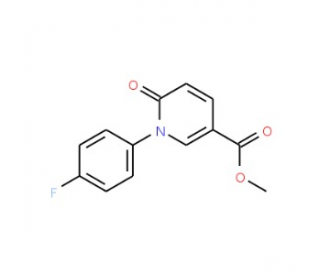详细说明
-
Purity
>95%, by SDS-PAGE under reducing conditions and visualized by silver stain
-
Endotoxin Level
<1.0 EU per 1 μg of the protein by the LAL method.
-
Activity
Measured in a cell proliferation assay using T1165.85.2.1 mouse plasmacytoma cells. Nordan, R.P. et al. (1987) J. Immunol. 139:813. The ED 50 for this effect is 0.15-0.75 ng/mL.
-
Source
E. coli-derived Phe26-Met208, with an N-terminal Met
-
Accession #
-
N-terminal Sequence
Analysis
Met
-
Predicted Molecular Mass
21 kDa
Carrier Free
What does CF mean?
CF stands for Carrier Free (CF). We typically add Bovine Serum Albumin (BSA) as a carrier protein to our recombinant proteins. Adding a carrier protein enhances protein stability, increases shelf-life, and allows the recombinant protein to be stored at a more dilute concentration. The carrier free version does not contain BSA.
What formulation is right for me?
In general, we advise purchasing the recombinant protein with BSA for use in cell or tissue culture, or as an ELISA standard. In contrast, the carrier free protein is recommended for applications, in which the presence of BSA could interfere.
| 1886-EL/CF | | 1886-EL |
| Formulation Lyophilized from a 0.2 μm filtered solution in PBS. | | Formulation Lyophilized from a 0.2 μm filtered solution in PBS with BSA as a carrier protein. |
| Reconstitution Reconstitute at 100 μg/mL in sterile PBS. | | Reconstitution Reconstitute at 100 μg/mL in sterile PBS containing at least 0.1% human or bovine serum albumin. |
| Shipping The product is shipped at ambient temperature. Upon receipt, store it immediately at the temperature recommended below. | | Shipping The product is shipped at ambient temperature. Upon receipt, store it immediately at the temperature recommended below. |
Stability & Storage: Use a manual defrost freezer and avoid repeated freeze-thaw cycles. - 12 months from date of receipt, -20 to -70 °C as supplied.
- 1 month, 2 to 8 °C under sterile conditions after reconstitution.
- 3 months, -20 to -70 °C under sterile conditions after reconstitution.
| | Stability & Storage: Use a manual defrost freezer and avoid repeated freeze-thaw cycles. - 12 months from date of receipt, -20 to -70 °C as supplied.
- 1 month, 2 to 8 °C under sterile conditions after reconstitution.
- 3 months, -20 to -70 °C under sterile conditions after reconstitution.
|
Background: IL-6
Interleukin-6 (IL-6) is a pleiotropic, alpha -helical, 22-28 kDa phosphorylated and variably glycosylated cytokine that plays important roles in the acute phase reaction, inflammation, hematopoiesis, bone metabolism, and cancer progression (1-5). Mature equine IL-6 is 181 amino acids (aa) in length and shares 59%, 39%, and 40% aa sequence identity with human, mouse, and rat IL-6, respectively IL-6 (6). IL-6 induces signaling through a cell surface heterodimeric receptor complex composed of a ligand binding subunit (IL-6 R alpha) and a signal transducing subunit (gp130). IL-6 binds to IL-6 R alpha, triggering IL-6 R alpha association with gp130 and gp130 dimerization (7). gp130 is also a component of the receptors for CLC, CNTF, CT-1, IL-11, IL-27, LIF, and OSM (8). Soluble forms of IL-6 R alpha are generated by both alternative splicing and proteolytic cleavage (5). In a mechanism known as trans-signaling, complexes of soluble IL-6 and IL-6 R alpha elicit responses from gp130-expressing cells that lack cell surface IL-6 R alpha (5). Trans-signaling enables a wider range of cell types to respond to IL-6, as the expression of gp130 is ubiquitous, while that of IL-6 R alpha is predominantly restricted to hepatocytes, monocytes, and resting lymphocytes (2, 5). Soluble splice forms of gp130 block trans-signaling from IL-6/IL-6 R alpha but not from other cytokines that use gp130 as a co-receptor (5, 9). IL-6, along with TNF-alpha and IL-1, drives the acute inflammatory response and the transition from acute inflammation to either acquired immunity or chronic inflammatory disease (1-5). When dysregulated, it contributes to chronic inflammation in obesity, insulin resistance, inflammatory bowel disease, arthritis, sepsis, and atherosclerosis (1, 2, 5). IL-6 can also function as an anti-inflammatory molecule, as in skeletal muscle where it is secreted in response to exercise (2). In addition, it enhances hematopoietic stem cell proliferation and the differentiation of Th17 cells, memory B cells, and plasma cells (1, 10).
-
References:
- Mansell, A. and B.J. Jenkins (2013) Cytokine Growth Factor Rev. 24:249.
- Schuett, H. et al. (2009) Thromb. Haemost. 102:215.
- Erta, M. et al. (2012) Int. J. Biol. Sci. 8:1254.
- Garbers, C. et al. (2012) Cytokine Growth Factor Rev. 23:85.
- Mihara, M. et al. (2012) Clin. Sci. (Lond.) 122:143.
- Swiderski, C.E. et al. (2000) Vet. Immunol. Immunopathol. 77:213.
- Murakami, M. et al. (1993) Science 260:1808.
- Muller-Newen, G. (2003) Sci. STKE 2003:PE40.
- Mitsuyama, K. et al. (2006) Clin. Exp. Immunol. 143:125.
- Cerutti, A. et al. (1998) J. Immunol. 160:2145.
-
Long Name:
Interleukin 6
-
Entrez Gene IDs:
3569 (Human); 16193 (Mouse); 24498 (Rat); 399500 (Porcine); 280826 (Bovine); 403985 (Canine); 100034196 (Equine); 493687 (Feline); 100008733 (Rabbit)
-
Alternate Names:
B cell stimulatory factor-2; B-cell differentiation factor; BSF-2; BSF2CTL differentiation factor; CDF; HGFHSFIFNB2Hybridoma growth factor; IFN-beta-2; IL6; IL-6; IL-6B-cell stimulatory factor 2; Interferon beta-2; interleukin 6 (interferon, beta 2); interleukin BSF-2; interleukin-6; MGI-2A












